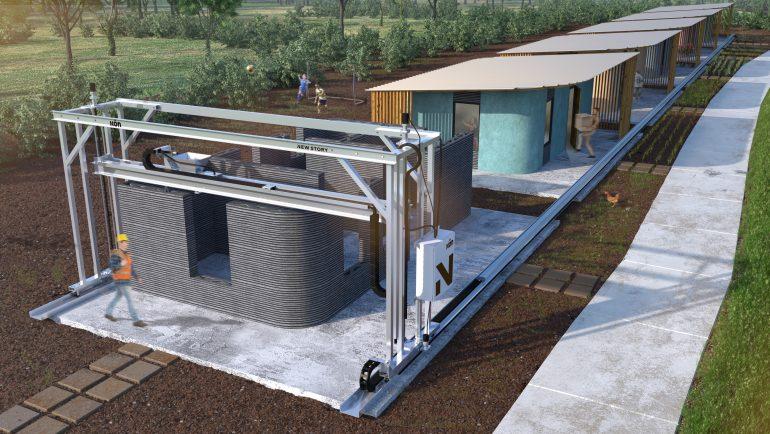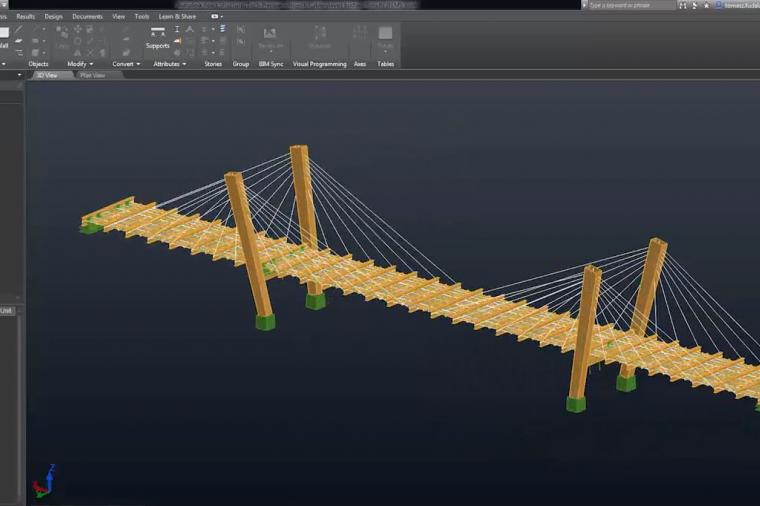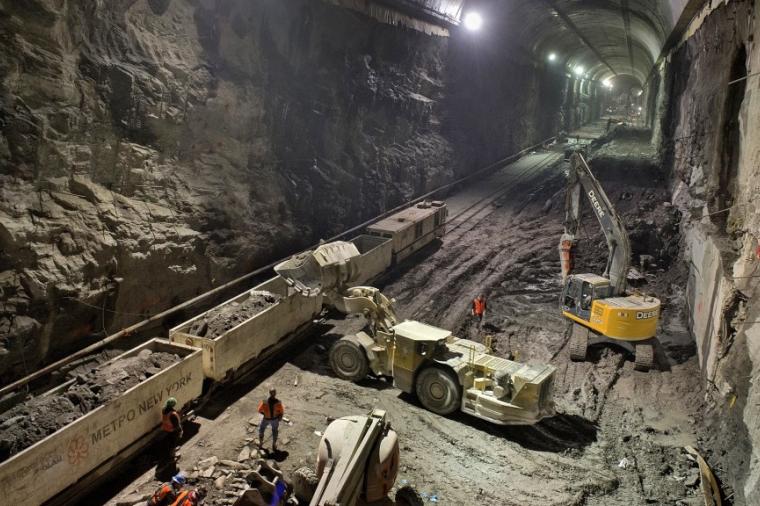Writing a New Story for Impoverished Communities with 3D Printed Homes

Over 900 million people around the globe live in sub-adequate housing that lacks necessary sanitation and water. By 2025, that number is expected to grow to 1.6 billion – a fifth of the world’s total population.
What can be done to provide this staggering population of people with access to adequate, affordable housing? New Story, a nonprofit that strives to address global homelessness, thinks it has an innovative solution to this problem – 3D printed homes. Using 3D printing technology, New Story aims to provide durable, affordable, permanent housing to families without homes around the world.
This technology is impressive and interesting for a number of reasons aside from its ability to house the homeless. The ability to rapidly fabricate houses could be a solution to other problems that involve the loss of homes and shelter – such as in disaster and emergency response situations.
To learn more about New Story, their mission and the possible applications for their technology, we spoke with Alexandria Lafci, the company’s co-founder and COO.
 GovDesignHub: Tell me about New Story. What is the mission and what are your responsibilities within the organization?
GovDesignHub: Tell me about New Story. What is the mission and what are your responsibilities within the organization?
Alexandria Lafci: I founded New Story with our other co-founder in late 2014. I now lead all of our ground operations – everything from choosing who we work with, where we work, ensuring the success of our construction, to ensuring that we are innovating in the work that we are doing.
In 2014, our co-founders and I became aware that – four years later – there were families still being impacted by the 2010 earthquake in Haiti. They were still living in the same thin tarp tents they were given immediately after the earthquake. Families were completely destroyed and living in impoverished conditions that impacted their health, educational outcomes, and overall wellbeing.
When the co-founders came together, we realized that we had the skills to create an organization that was different than existing nonprofits – we saw a gap with transparency and accountability in the nonprofit sector. So, if we were going to create an organization, we wanted to do something that was different from the status quo. We didn’t want to continue the experience of making a giving experience feel like a black hole.
What I mean is most people give money to an organization and don’t hear from the organization again until they are asking you for more money. We have a 100-percent model, so every donation goes directly to funding homes, overhead, and R&D. We created an online donation platform for people to donate and get matched with a specific family. We close the accountability loop by giving a video of the family moving into their home to the people that donated.
We wanted to push forward how housing is done. There are over a billion people on the globe that lack adequate shelter. In the beginning, it wasn’t “let’s start a business”, it was we wanted to fund a few homes. For the first six months, we still had our fulltime jobs. Around the six-month point, we were accepted into Y Combinator, the accelerator based in Silicon Valley. When we got chosen, it was a no-brainer for us to move from Atlanta to the bay area. After the program, the audacious goal setting became contagious and it led to surprising growth. We weren’t just funding homes anymore, we were funding communities. We’ve built over sixteen communities across four countries.
GovDesignHub: What gave New Story the idea for the 3D printed houses? Tell us about your work with ICON.
Alexandria Lafci: In that work, we wanted to look at best practices and see who was doing that work really well. We are designing communities for families that are living in extreme poverty and other nonprofits and governments are building social housing, so we wanted to learn from these people that have done this for decades.
We found that there is a lot of money that goes into social housing. In Latin America, which is one of the places we work, it’s over $7 billion annually that is expended for social housing. The bad news was the quality of which the homes and communities were being designed and built. The biggest observation was that almost every community – from Nepal to Mexico – the communities were designed in rows to fit as many homes as you could on the piece of land that you have and that led to rows of tightly knitted homes without thought to green space and livelihood.
When I visited some of these communities in person it felt claustrophobic. If you are spending millions to create a new slum – a place that’s not designed for people to survive – it feels like a waste of resources. Many of these communities were empty; often times, 30 to 100-percent empty. – The underlying trend is no one asked people – “is this piece of land going to be conducive to how you live your life?” By asking simple questions you can gain information that will help build a more successful design.
We knew there were a lot of organizations building homes. What can we be the best in the world at? If we could help all these world governments have even a few percent of increased efficiency than we could really push the need forward. The issue with reaching a billion people in any reasonable amount of time is that homes are costly, take time to complete, and there is a quality control issue. So, how can we build homes faster and less expensively without compromising quality?
We started researching and we stumbled upon 3D printing and prefabrication as two options that could help us. We chose 3D home printing and got introduced to ICON through our network. At that point, ICON’s incredible founders built a prototype that was building really small structures. We came to them and offered to fund and design this project to focus on some of the neediest people in the world. It was a great partnership. ICON will now be focusing on housing in the U.S. with 3D printing technology.
We started in August of 2017 and if building a robot for houses wasn’t enough, we gave ICON a lot of design constraints. This printer is designed to work in some of the hardest areas. Some constraints we gave ICON were that it needed to work in an area where power wasn’t reliable, we want this to be operated by people from the community, rugged terrain in certain areas – there is a whole slew of things to consider when you are printing this home in rural Haiti compared to a perfect lab environment. The mix, the mortar that comes through the machine, was difficult to perfect. There are many lab-created solutions that get added to mix, but our constraint was that we had to use material that was locally available.
The ICON team worked tirelessly to get the printer complete but also a 3D printed home that is in Austin, Texas. It was the first 3D printed permanent house ever created in the U.S. It’s beautiful and durable. It can be printed in twelve to twenty-four hours and it’s less expensive. We are expecting to have a price savings of thirty to forty percent.
GovDesignHub: Now that the design has been tested, what is next for New Story?
Alexandria Lafci: New Story’s goal is to help the social housing sector. We know that more people can be reached if houses can be built without sacrificing quality. For instance, governments often have a lot going on, which prevents them from being truly innovative. So, who is going to innovate on behalf of families that don’t have housing? That’s the space that we aim to fill.
GovDesignHub: Do you see this technology/design being used by governments around the world for disaster relief and humanitarian efforts?
Alexandria Lafci: New Story is working with local governments in Mexico. Early next year, we’ll be building the first ever 3D printed community in Mexico and the land will be granted by the local municipality. We always work with local governments for these communities. I can’t disclose the names just yet, but we do have multiple governments at the national level that are very interested in using multiple parts of our operation including the 3D home printing.
For additional information about New Story and to learn more about how their technology can be used to help house victims of natural disasters more effectively and cost-efficiently, go to their Website and watch the video below.

















